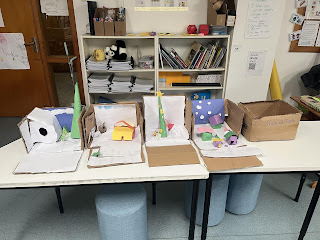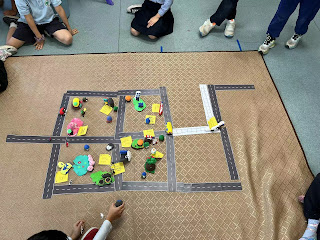"How the Grinch Stole Christmas": Paper Theatre

What better way to celebrate the week before Christmas vacation than with a fun and educational activity? Grade 2 students recently read "How the Grinch Stole Christmas" and designed set pieces for the story's various locations. From Mount Krumpet to Whoville, students collaborated on creating visual representations of the story's world. Through this process, students also honed their problem-solving skills, considering how characters and props changed throughout the story and how to accommodate those changes in their designs. The day of the performance allowed each group to showcase their work and practice their storytelling abilities. This activity provided valuable opportunities for collaboration, planning, and problem-solving, while also allowing students to flex their creative muscles in visual arts and drama. In addition, students practiced important literacy skills such as story sequencing, reading, speaking, listening, and writing. What a wonderful lead-





